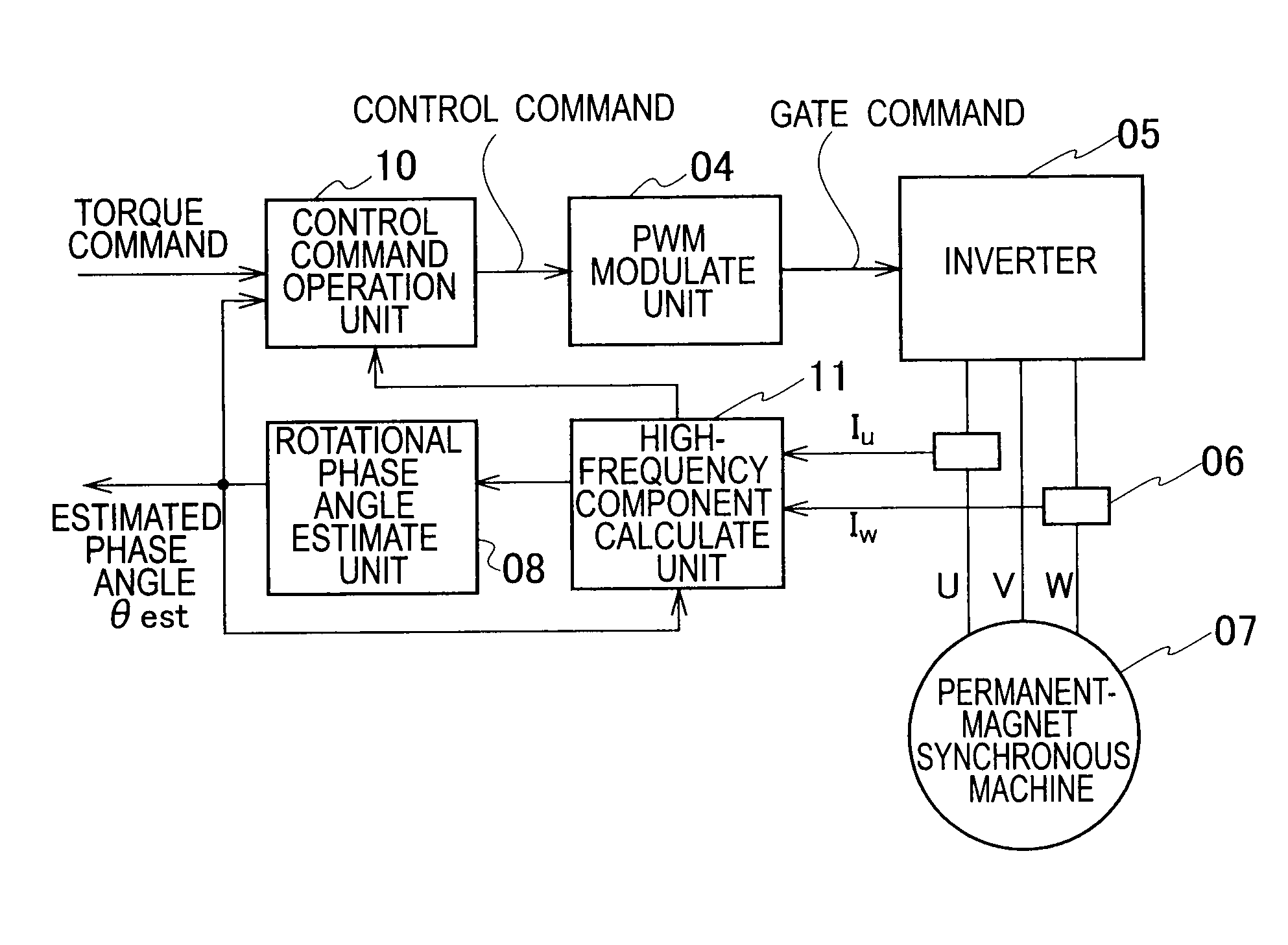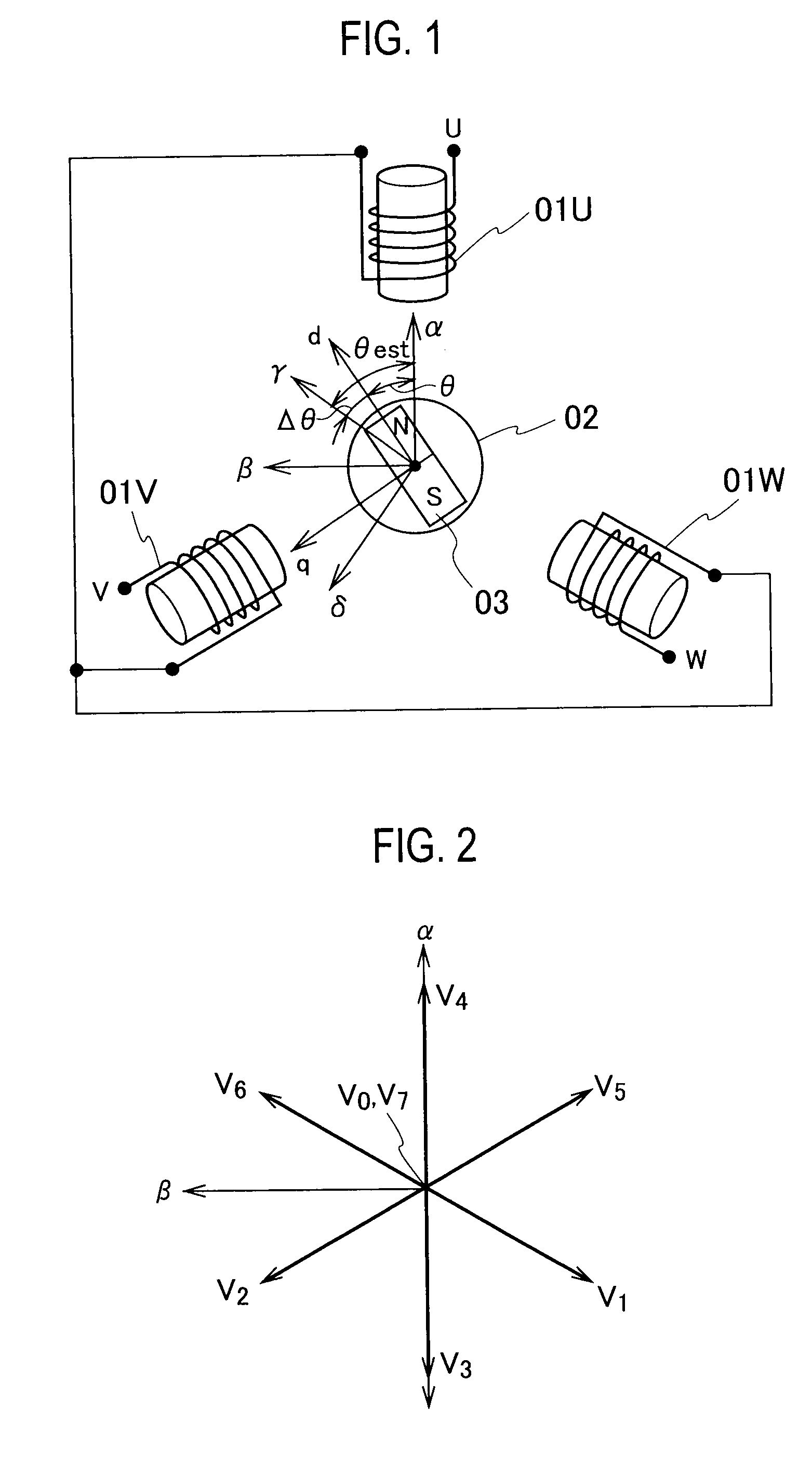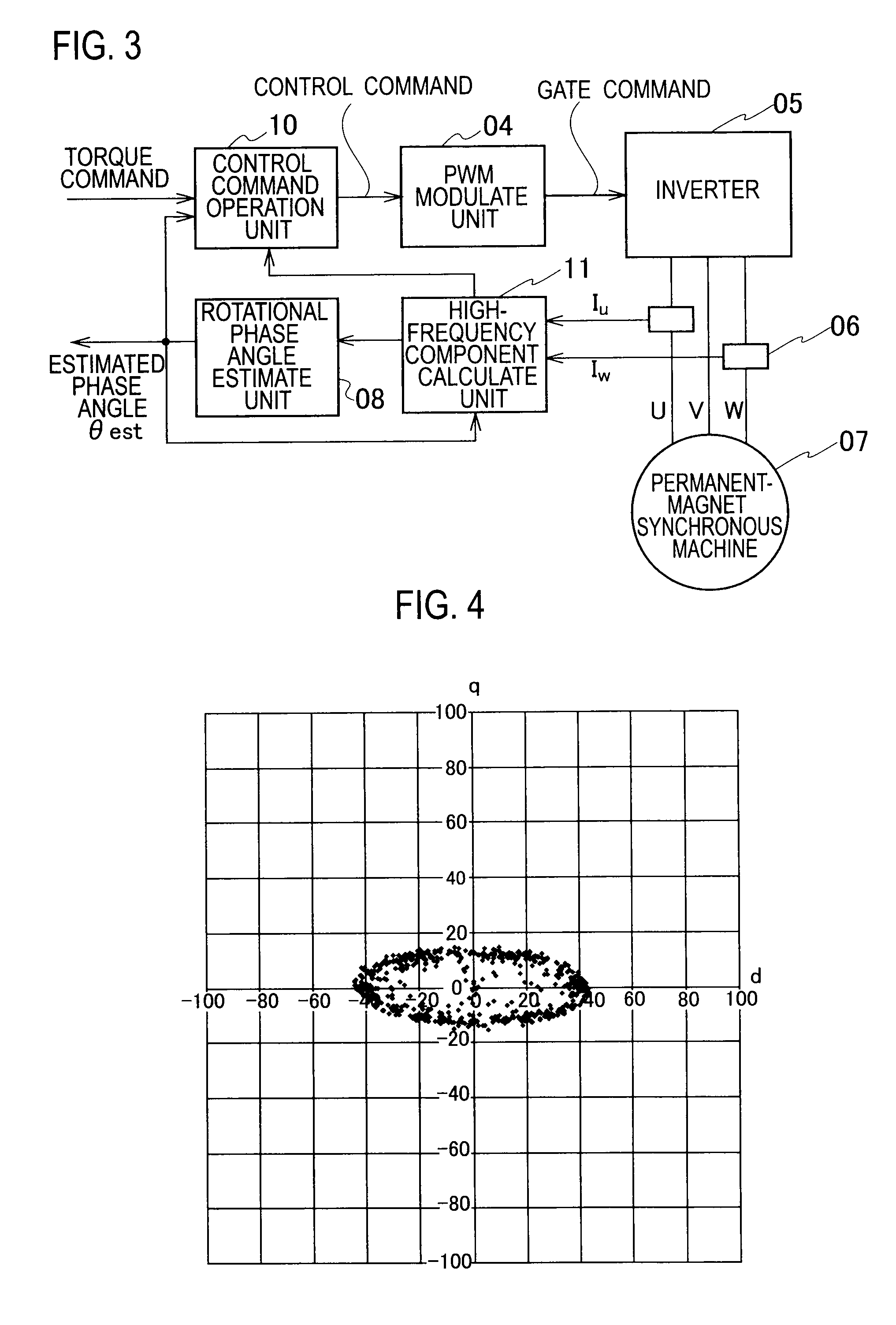Sensorless control apparatus of synchronous machine
a synchronous machine and control apparatus technology, applied in the direction of electronic commutators, motor/generator/converter stoppers, dynamo-electric converter control, etc., can solve the problems of deteriorating the efficiency of an overall maintenance checkup, the limited installation space so as to reduce the loss and noise of the synchronous machine, stably operate, and simple adjustment
- Summary
- Abstract
- Description
- Claims
- Application Information
AI Technical Summary
Benefits of technology
Problems solved by technology
Method used
Image
Examples
first embodiment
[0024]A sensorless control apparatus of a synchronous machine according to the present invention calculates high-frequency components of changes in currents passing through the permanent-magnet synchronous machine, estimates a phase angle of a motor rotor without a rotational phase angle sensor according to a spatial distribution of the high-frequency components on a dq-axes coordinate system synchronized with the rotation of the synchronous machine, and controls the permanent-magnet synchronous machine accordingly.
[0025]FIG. 1 shows a configuration of a standard permanent-magnet synchronous machine. A stator 01 of the permanent-magnet synchronous machine consists of three-phase windings 01U, 01V, and 01W and a rotor thereof consists of a rotor iron core 02 and a permanent magnet 03. In a sensorless control apparatus of a synchronous machine according to the embodiment, a coordinate system that turns in synchronization with the rotation of the permanent-magnet synchronous machine is...
second embodiment
[0057]A sensorless control apparatus of a synchronous machine according to a second embodiment of the present invention will be explained. The configuration of this embodiment is the same as that of the first embodiment shown in FIG. 3. This embodiment differs from the first embodiment in an operation carried out by the rotational phase angle estimate unit 08. This embodiment is characterized in that, in a high torque output state in which currents pass to saturate the inductance of the permanent-magnet synchronous machine 07, the embodiment estimates a rotational phase angle according to a change in the shape of a spatial distribution of high-frequency components of current changes.
[0058]Estimation of a rotational phase angle carried out by the rotational phase angle estimate unit 08 according to the first embodiment uses that a spatial distribution of high-frequency components of current changes indicates a rotor inductance of the permanent-magnet synchronous machine 07 and this h...
third embodiment
[0065]A sensorless control apparatus of a synchronous machine according to a third embodiment of the present invention will be explained. A configuration of the sensorless control apparatus of this embodiment is common to that of the first and second embodiments shown in FIG. 3. A rotational phase angle estimate process carried out by the rotational phase angle estimate unit 08 of this embodiment differs from those of the first and second embodiments. The third embodiment is characterized in that it calculates a feature value in a spatial distribution of high-frequency components of current changes on the dq-axes coordinate system, and according to the feature value, estimates a rotational phase angle.
[0066]This embodiment selects as a feature value a maximum value from among components detected in a predetermined angular orientation from the γ-axis in a high-frequency component distribution of current changes plotted on the γδ-axes. A relationship between the selected feature value...
PUM
 Login to View More
Login to View More Abstract
Description
Claims
Application Information
 Login to View More
Login to View More - R&D
- Intellectual Property
- Life Sciences
- Materials
- Tech Scout
- Unparalleled Data Quality
- Higher Quality Content
- 60% Fewer Hallucinations
Browse by: Latest US Patents, China's latest patents, Technical Efficacy Thesaurus, Application Domain, Technology Topic, Popular Technical Reports.
© 2025 PatSnap. All rights reserved.Legal|Privacy policy|Modern Slavery Act Transparency Statement|Sitemap|About US| Contact US: help@patsnap.com



